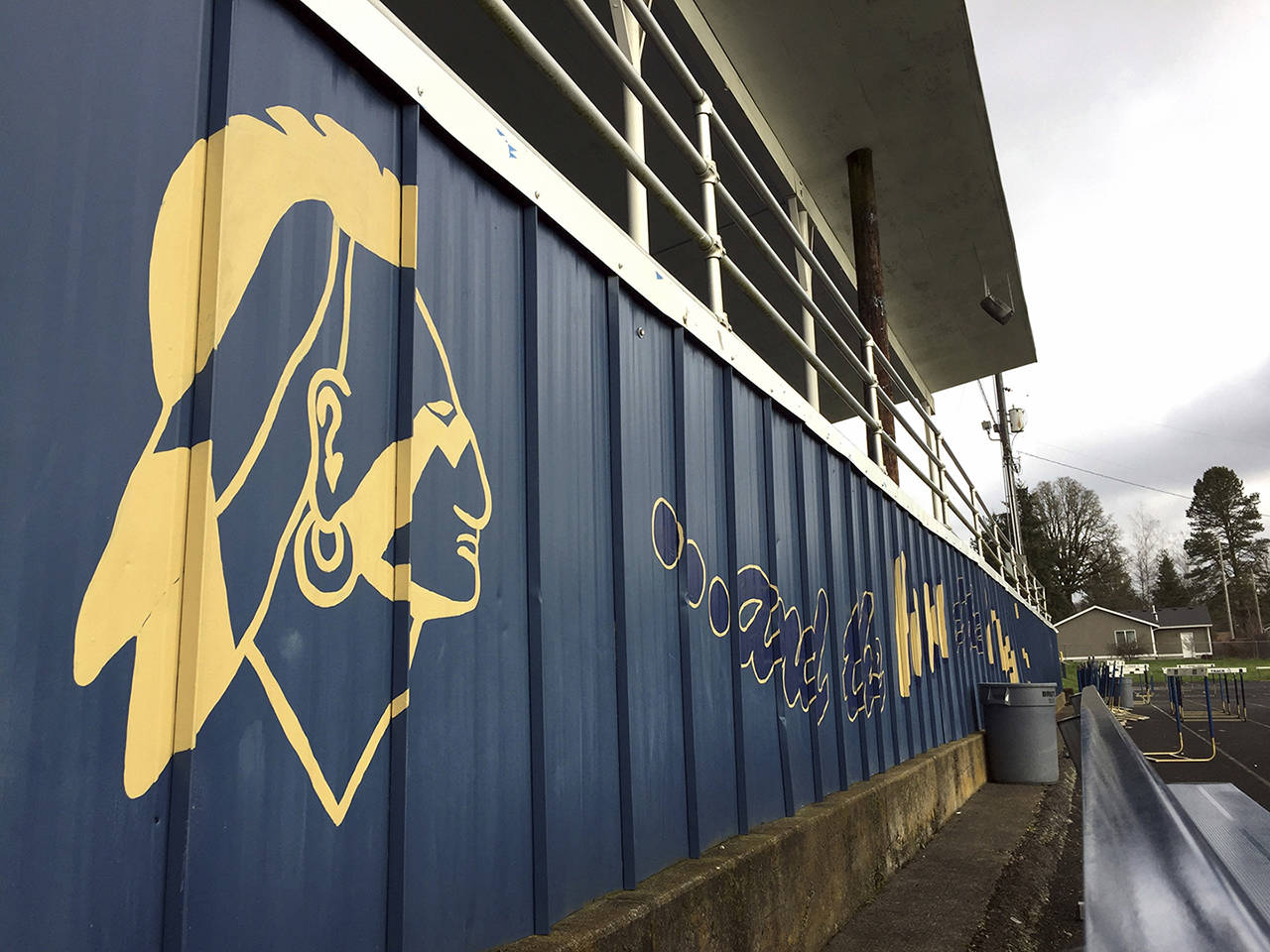By GILLIAN FLACCUS / Associated Press
BANKS, Ore. — This fall, the football team in the tiny Oregon logging town of Banks will once again take the field as the Braves. But this time, they hope to have the approval of the tribe that originally inhabited the area.
It’s one of many changes in the works this spring across Oregon prompted by the nation’s long-running uproar over Native American sports mascots. School districts in the state with tribal mascots must do away with them by July 1 or risk punishment that could include the withholding of state funds.
However, the state will make exceptions for districts that get the approval of one of Oregon’s nine tribes — and the Banks School District is one of more than a half-dozen tiny districts trying to take advantage of that loophole.
The state Board of Education is expected to vote Thursday on an agreement between the Banks district and the Confederated Tribes of the Grand Ronde, the first such deal to reach the board.
The deal, nearly two years in the making, would allow the district to keep the name Braves. In exchange, it would give up the “Indian head” image — a Native American man with a partially shaved head, face paint, ear hoop and feathers — and implement a curriculum developed by the Grand Ronde that teaches the history of its people from a tribal perspective.
The process highlights the dilemma facing small schools across the U.S. as attention has focused on high-profile battles over mascots such as the Washington Redskins.
Minnesota and Wisconsin have banned Native American mascots at school districts for decades, but elsewhere communities have wrestled with the issue for years, said Jennifer Guiliano, a history professor at Indiana University-Purdue University Indianapolis.
Oregon’s statewide approach is unique, and its willingness to allow an exception for districts that collaborate with tribes calls to mind the NCAA’s longstanding ban on Native American mascots that don’t have tribal buy-in, she said.
But even with collaboration, agreements at the high school and college levels can raise questions about the nature of the long-term relationship once a deal is inked.
“When people say we’re going to go get a tribe that’s going to sign off on one of these names or brands, my question is, what is the sustained relationship going to be?” she said. “You have to make sure the tribe isn’t being taken advantage of.”
In Banks, nearly all the residents made it clear they didn’t want to give up their mascot entirely — and the tribe was willing to listen.
“It’s been the nickname or the mascot for 70-plus years or so and it’s a symbol of pride and respect for our community,” said district Superintendent Jeff Leo, who oversees 1,000 students in the K-12 district 25 miles (40.23 kilometers) west of Portland.
“We just didn’t say, ‘Oh, we’re going to keep the name. We looked into it, we read things. We didn’t take it lightly at all.”
The district’s new mascot, designed by the tribe and district with help from Nike, will be two capital B’s aligned back-to-back and surrounded by a zig-zagging line. Viewed horizontally, the B’s look like a mountain range and symbolize the town’s location at the crossroads of coastal mountains and a fertile valley.
For the tribe, getting the district to update its curriculum was critical, said Reyn Leno, Grand Ronde tribal chairman.
“If we can educate people as to what is acceptable and what is not acceptable at a young age, we hope down the road we won’t have mascot issues,” he said. “And at the end of the day, the derogatory images are off the gym floor.”
Of the 15 Oregon districts with tribal mascots, eight have either submitted a plan for approval or given notice to state education officials that they are working with a tribe or intend to do so, said Cindy Hunt, manager of the state Education Department’s division of government and legal affairs. Four districts opted to change to a non-tribal mascot.
In Banks, the agreement comes with a price.
During the next five years, the district would spend up to $95,000 to erase the Indian head from the gym floor, uniforms, scoreboards, trophy cases and even letterhead, Leo said.
That’s a lot of money in the district where many school facilities need repair, said Justin Crossen, who has four kids who play sports in the district.
For others, a deal that lets them stay the Braves is worth it. When the “Star Spangled Banner” is played at every game, the crowd joins in and tweaks the last stanza — “and the home of the Braves” — to thunderous applause.
“I just remember at the end of the national anthem, feeling like they’re talking about us. It’s time for us to go kick some butt now,” said Chris Lyda, who played football and wrestled at the high school before graduating in 1991. “I think it’s still going to end that way. It’s still going to be that reverberating ‘Braves.’”
Talk to us
> Give us your news tips.
> Send us a letter to the editor.
> More Herald contact information.

























